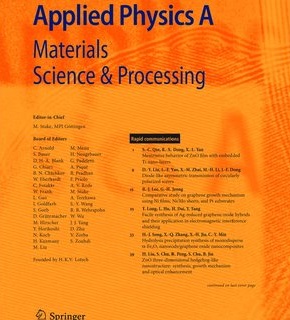Effect of low-temperature on the surface quality for Zr-based bulk metallic glass using by milling-grinding composite processing
Abstract
Zr-based bulk metallic glass is a kind of hard brittle material which is extremely sensitive to temperature. The processing method has brought challenges to researchers. Milling-grinding composite machining combines the high efficiency of milling with the precision of grinding. By coating abrasive grain on the back surface of the milling cutter, the milling cutter has the ability of grinding. However, due to the grinding effect of abrasive particles, the cutting temperature is higher than that of milling. Using a frozen chuck effectively improved heat dissipation and reduced cutting temperature, and realized the low- temperature milling-grinding composite machining of Zr-based bulk metallic glass. The variations in machined surface morphology were compared when the spindle speed, feed rate and radial cutting depth were changed at room temperature and low temperature. The effects of different abrasive grain sizes and different tool edge numbers on the machined surface morphology and roughness were analyzed under room temperature processing conditions. The results show that the low-temperature environment can effectively improve the machined surface morphology, inhibit the occurrence of ridge mounted morphology and crazing on the machined surface, and low-temperature machining yields smoother surfaces with reduced roughness; Use the milling-grinding cutter with smaller abrasive grain size for processing, and effectively eliminate the scaly burrs generated on the processed surface; Dimples appear on the machined surface of four edge milling-grinding cutter, and the machined surface morphology is obviously different; The main failure modes of milling-grinding composite tools are coating bond peeling, tool tip chipping and coating wear; The two edge milling-grinding cutter is more suitable for low temperature milling-grinding of Zr-based BMG than the four edge cutter.

 求助内容:
求助内容: 应助结果提醒方式:
应助结果提醒方式:


